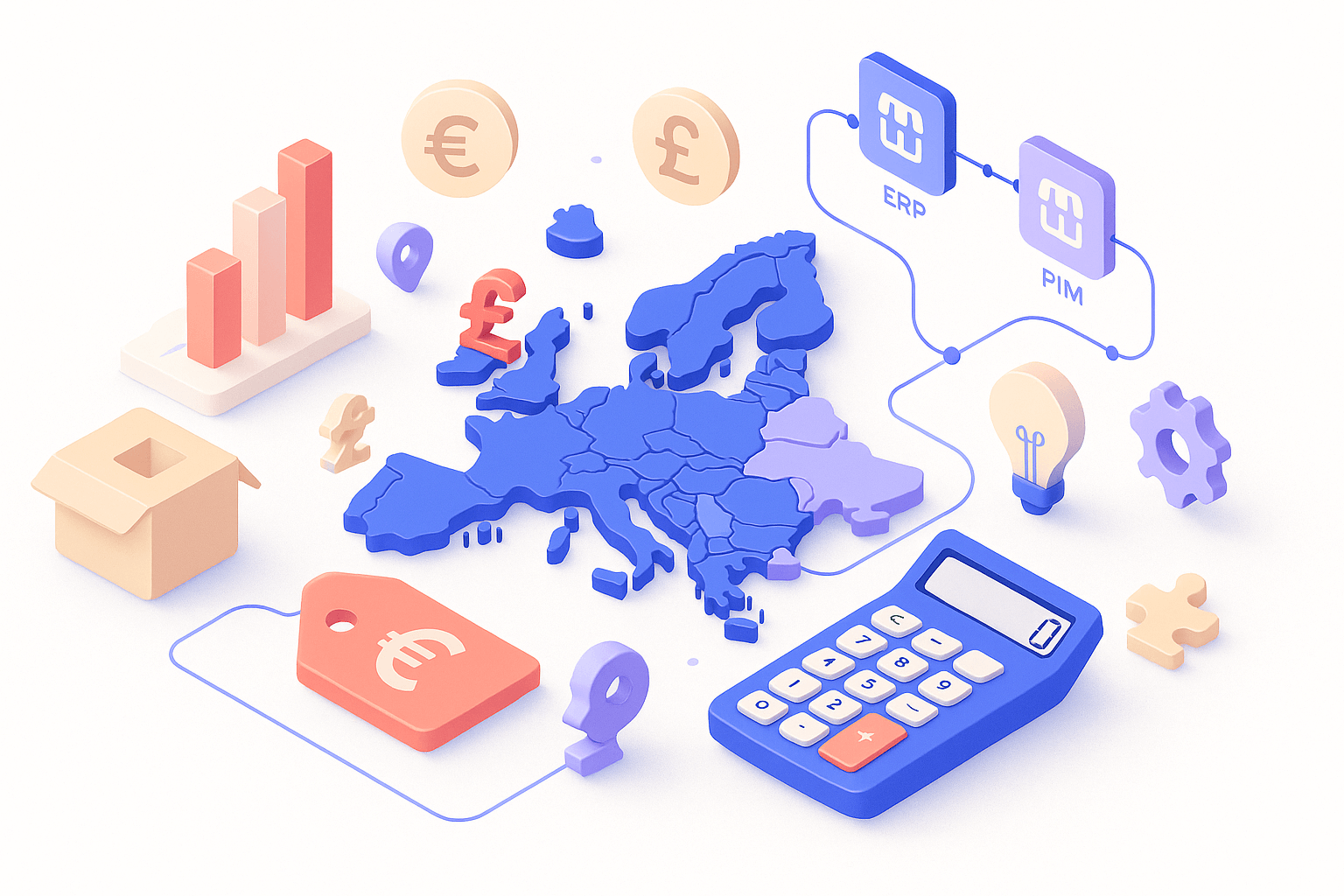

Complex pricing logic, mapped across ERP, PIM, and storefronts, is the hidden tax on many European e-commerce operations. This post explains why those rules fail, what it costs your business, and how to simplify pricing without losing local control.
Too many pricing rules, spread across systems, create slow decision cycles and frequent errors. Your team spends hours reconciling VAT, promotions, MAP, currency conversion, and supplier constraints for each market, instead of focusing on margin and strategy. That is why this is urgent for category managers, pricing leads, and e-commerce directors.
Pricing complexity has escalated because the market environment changed on multiple fronts.
First, consumer behavior moved further online. E-commerce represented roughly 15 percent of retail sales across Europe in 2023, and adoption continued to rise into 2024, making digital pricing a primary lever for revenue management.
Second, macro volatility forced faster price adjustments. Inflation spikes and subsequent localized relief created wide swings in costs and pricing pressure through 2023 and 2024, so retailers had to change prices more often to protect margin. Eurostat’s inflation and purchasing power data shows how uneven that pressure was across markets.
Third, systems landscapes became more fragmented. Companies keep adding specialized tools for catalog, ERP, commerce, and analytics. Without a central pricing orchestration layer, rules end up duplicated or contradictory in PIM, ERP, and the shop, and the number of manual mappings grows with each new market or channel. McKinsey and other industry observers have documented how retailers who cannot orchestrate pricing lose share to more agile competitors.
These three forces mean the old approach, a dozen spreadsheets and a few custom scripts that run monthly, no longer scales.
At the root, your pricing rules are brittle because they are encoded in the wrong places and lack context. Rules live in ERP for compliance, in the PIM for catalog presentation, and in the shop for promotional display. Each system has its own notion of what “price” means, and nobody owns the canonical rule set.
A few realistic examples from our clients:
Consequences of not addressing this problem include margin leakage, slower go-to-market for promotions, regulatory fines, and a bloated operations team. Reputational damage also follows when prices diverge from advertised communications, or when loyalty offers do not apply uniformly.
The solution is not to rip out systems and start over. It is to introduce a clear pricing architecture, governance, and a small set of practical processes that let you move quickly and safely.
Start with three principles.
How to start today?
Leading European merchants treat pricing as a product capability. They combine centralized strategy with localized execution, using automation and governance to scale.
Some trends to watch through 2025:
All of these moves preserve local control while drastically shrinking operational overhead. The competitive payoff is speed, fewer disputes with suppliers, and better margin capture.
Complex pricing is not a technology problem alone. It is a product and process problem that requires a small amount of engineering and a lot of governance. The companies that win will make pricing predictable where it must be, and flexible where differentiation matters.
Disivo helps teams manage multi-market pricing complexity through an orchestration approach that centralizes rule definitions, maps those rules to ERP, PIM, and shop data models, and offers automated testing and governance workflows. The platform is designed to increase visibility across markets, reduce manual mappings, and speed up safe price changes.
Further reading and sources:
https://ec.europa.eu/eurostat/statistics-explained/index.php?title=E-commerce_statistics
https://www.statista.com/statistics/1119871/e-commerce-share-of-total-retail-sales-europe/
https://www.mckinsey.com/capabilities/growth-marketing-and-sales/our-insights/how-retailers-can-capture-value-from-dynamic-pricing
https://taxation-customs.ec.europa.eu/business/vat/ecommerce_en